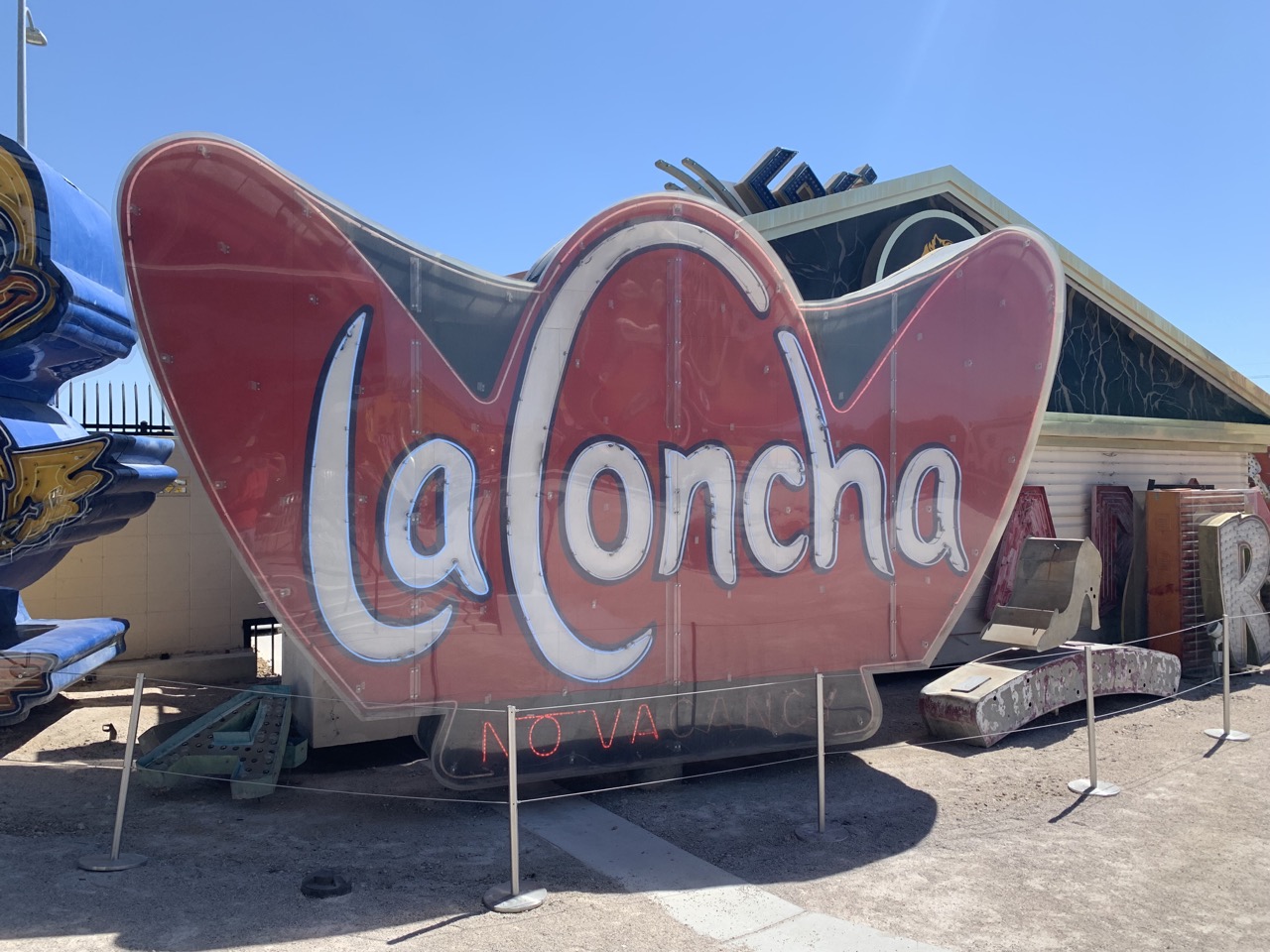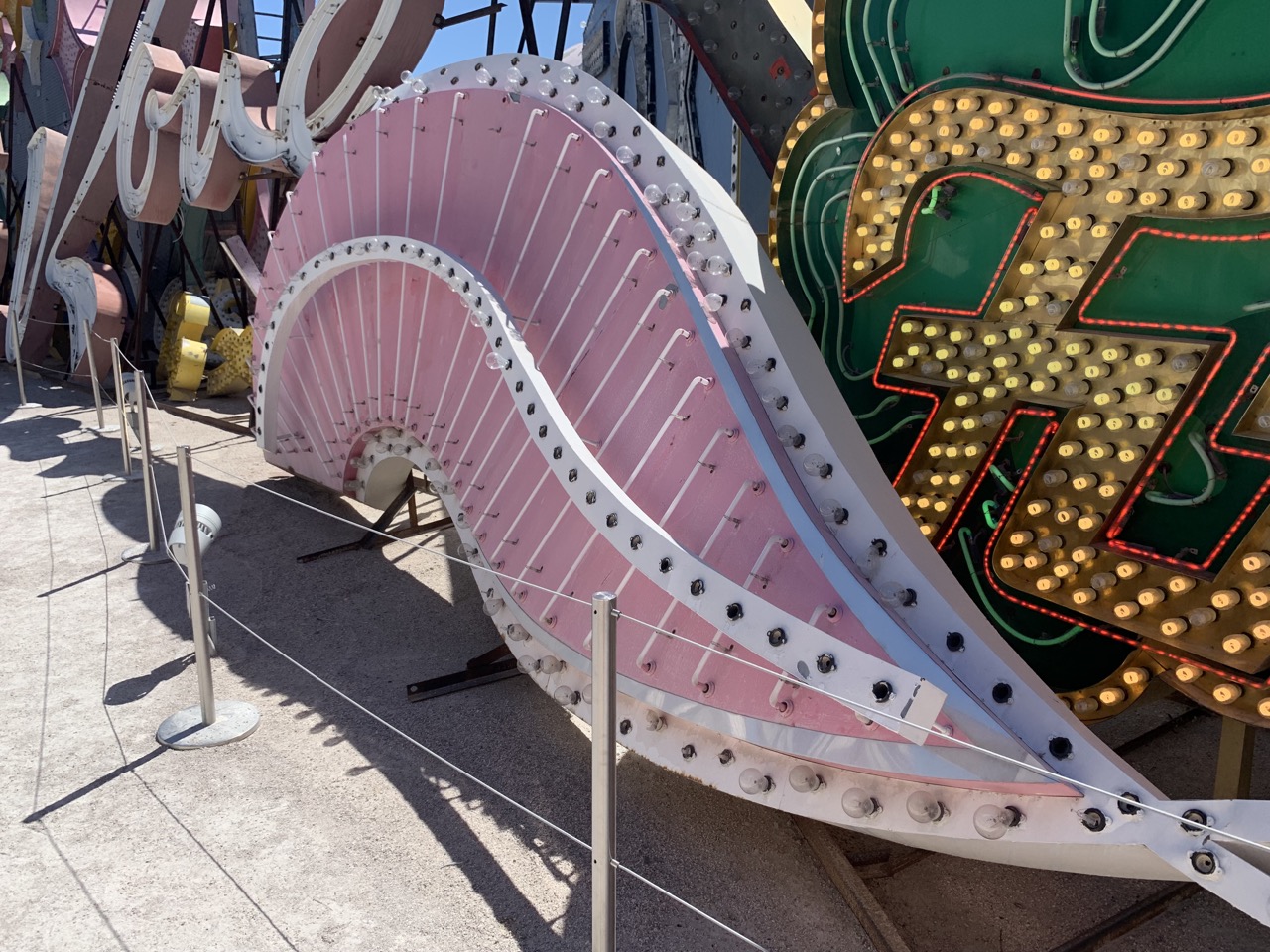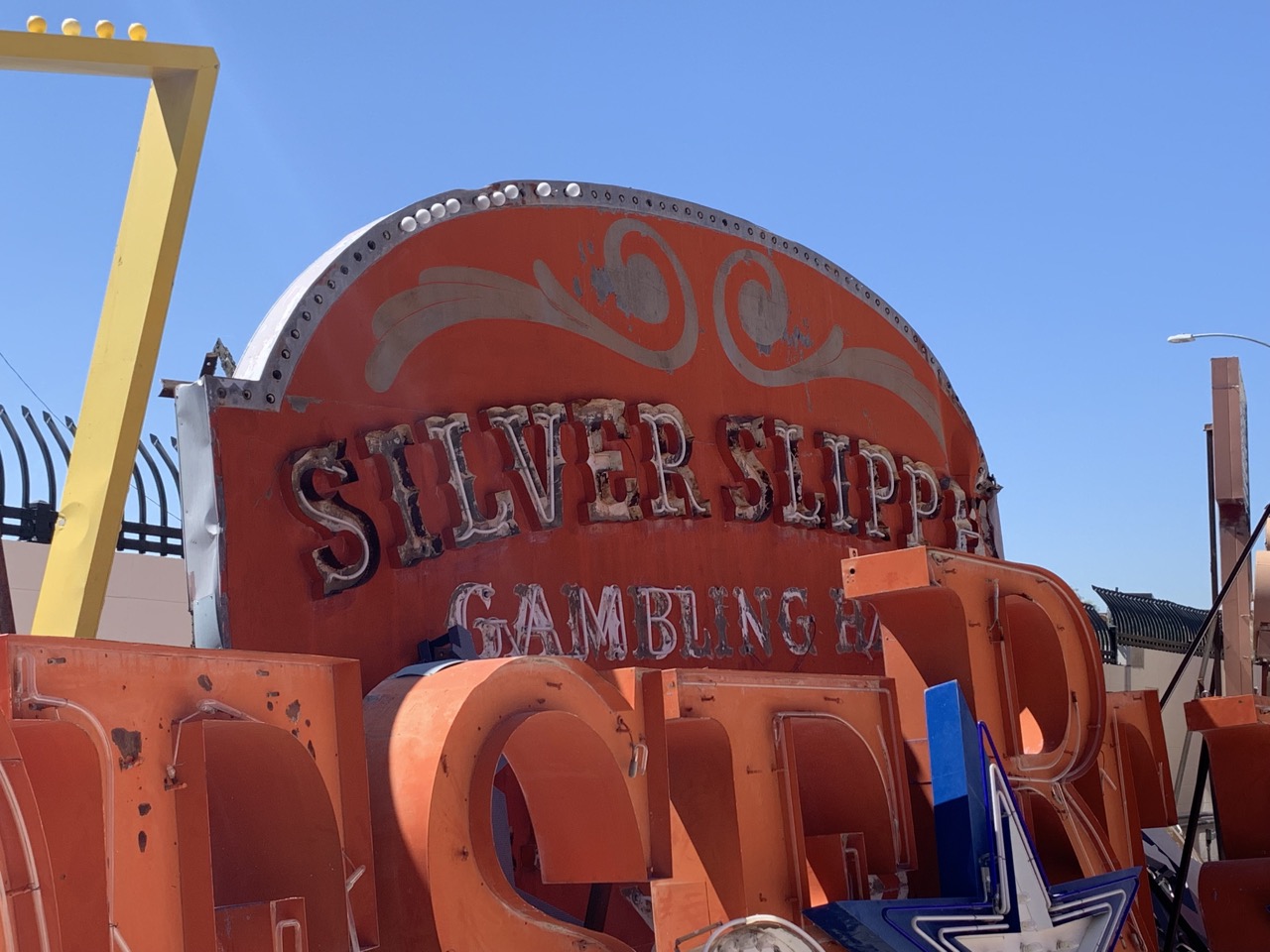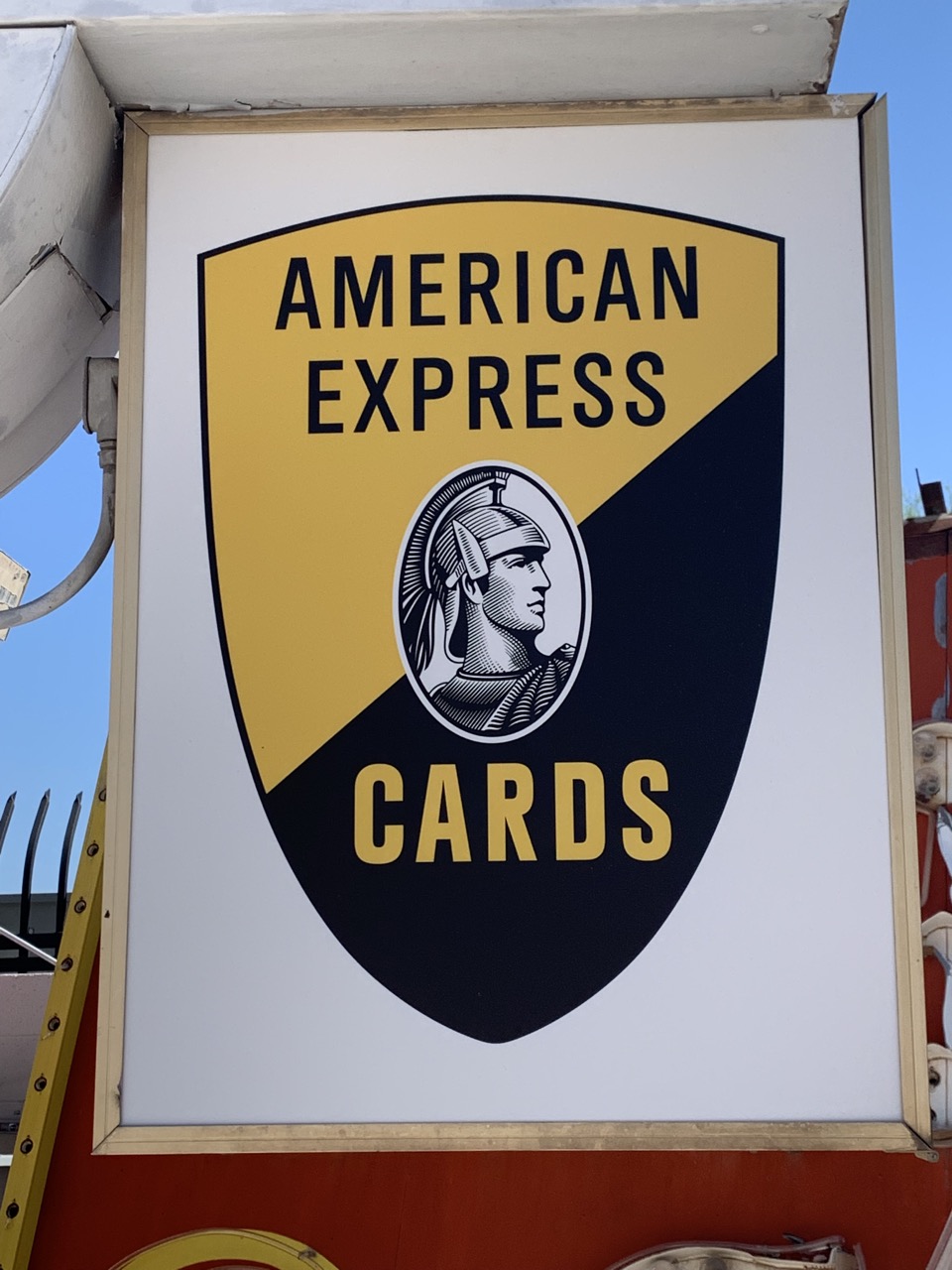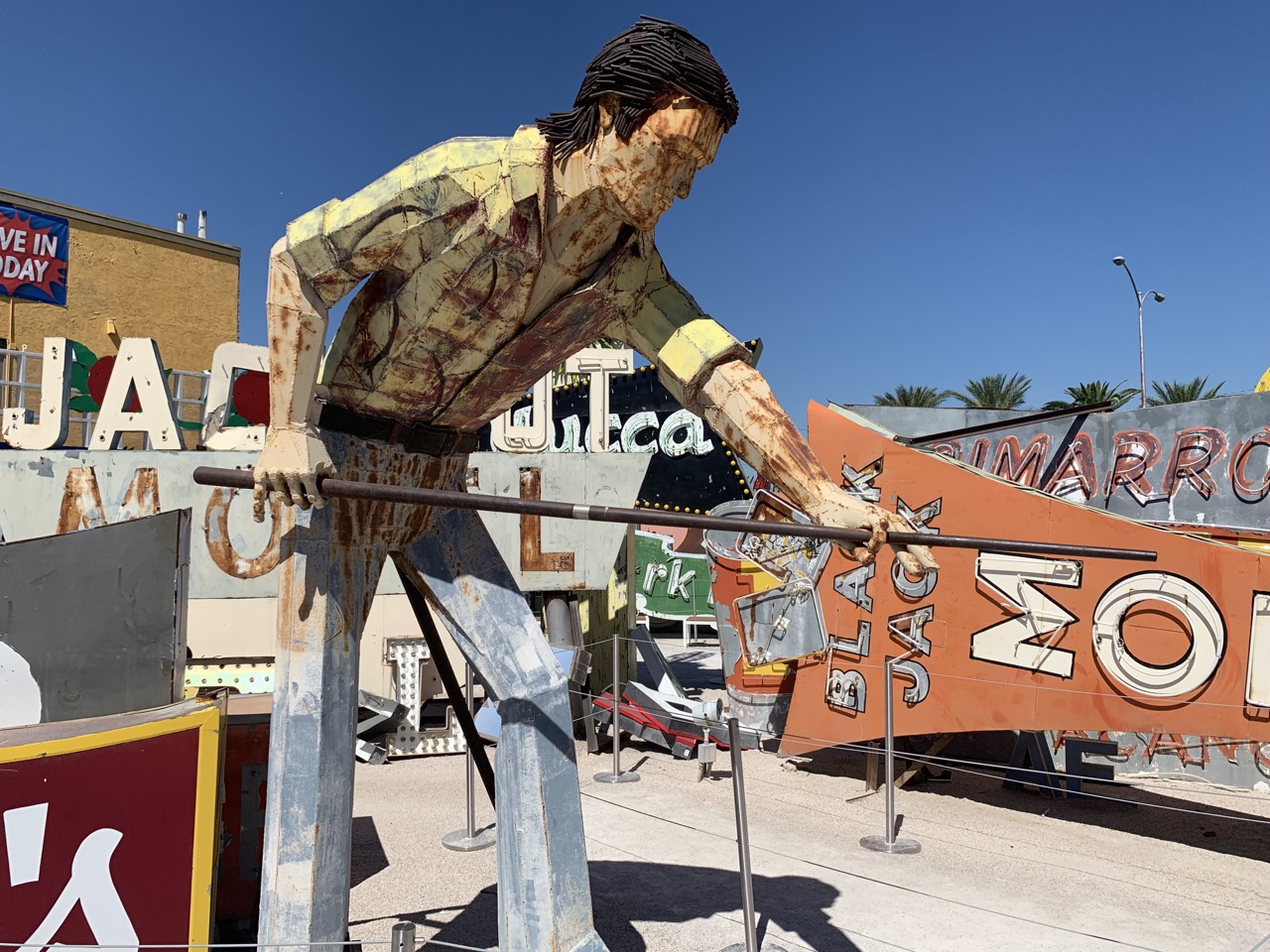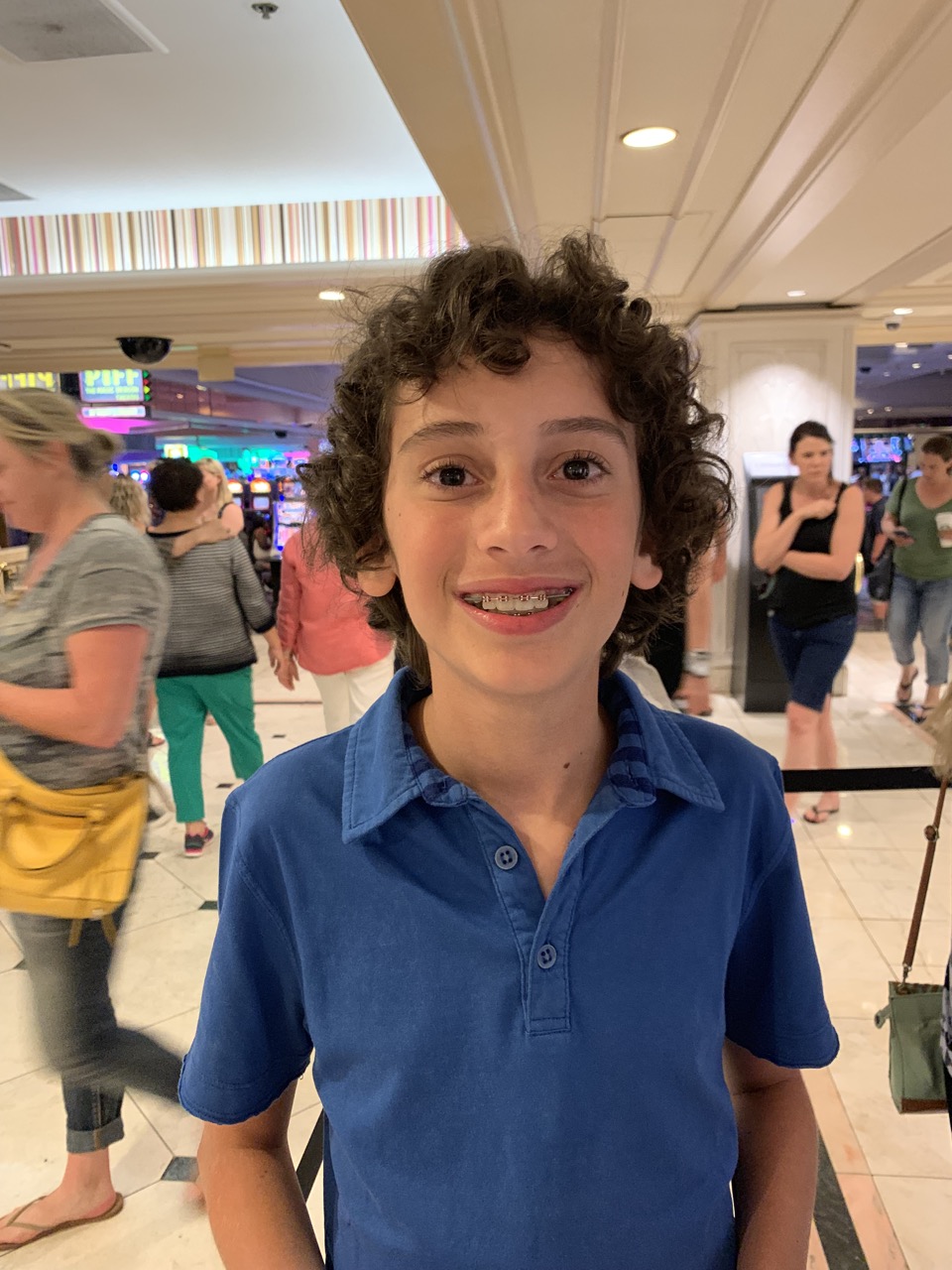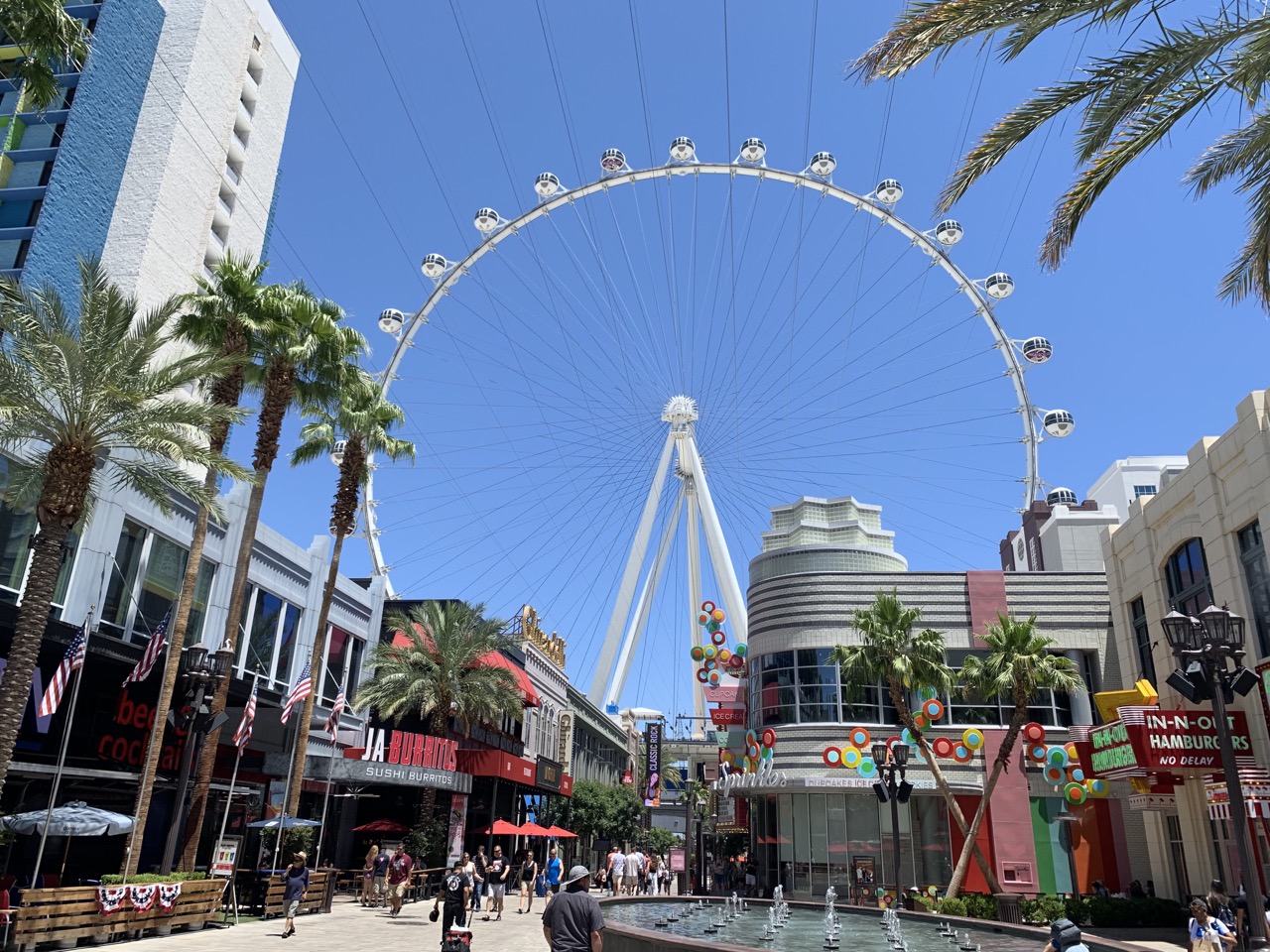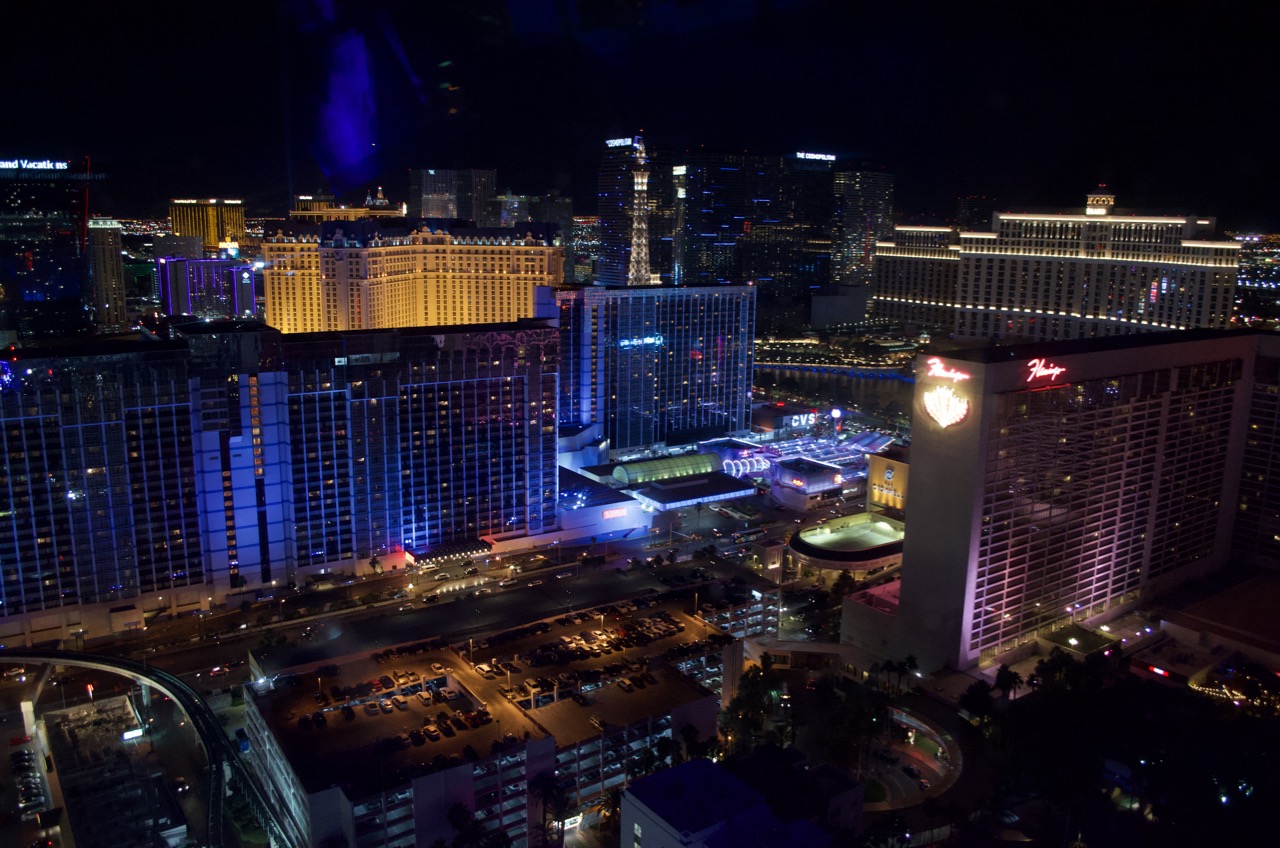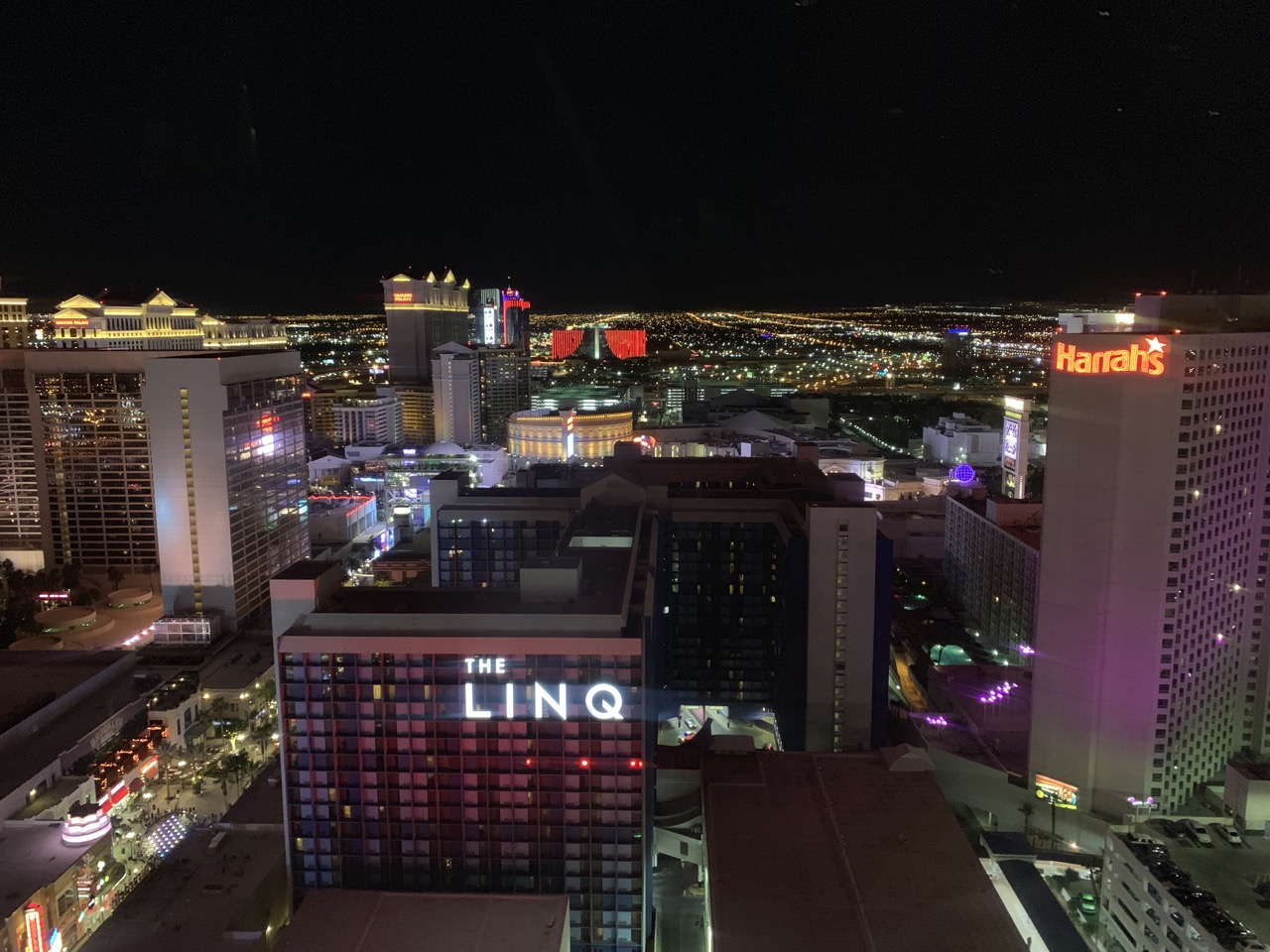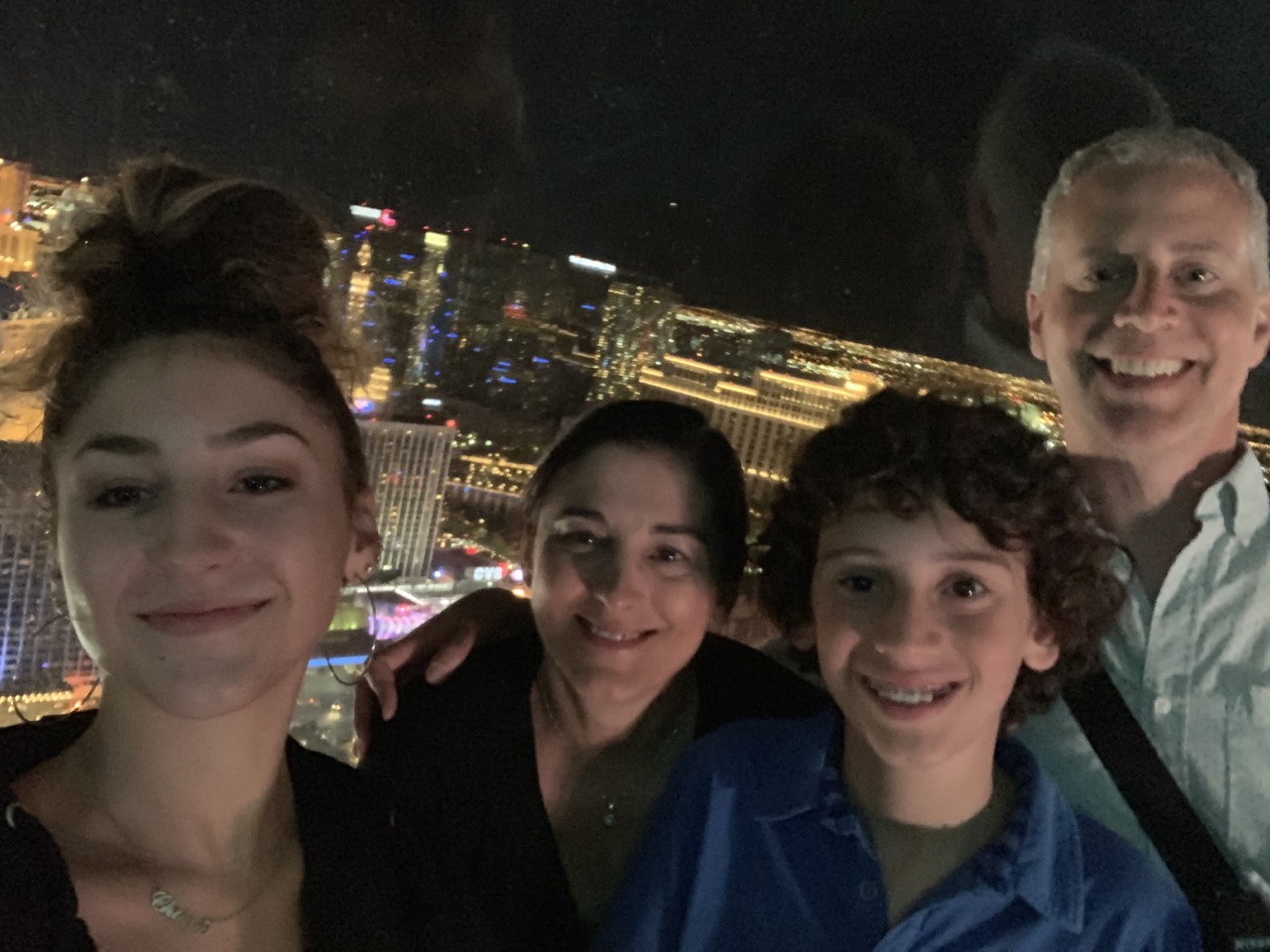Day 15 – Last Day in Las Vegas
The last full day in Vegas started at the Neon Museum.
As I mentioned in a previous post, I’ve been coming to this city for a long time. I used to read books about its fascinating and unique history when I was younger. Most people know about Ben “Bugsy” Siegel. Although his Flamingo hotel wasn’t the first casino on Las Vegas Boulevard (that distinction goes to the El Rancho), it was Siegel and other organized crime figures that turned Las Vegas into a real destination. The 1950s brought an explosion of new casinos like The Silver Slipper, The Dunes, The Sahara, and The Sands.
Jay Sarno started the second wave of big changes in Vegas when he completed Caesar’s Palace in 1966. It’s said he wanted to build a casino where everyone would be treated like a king (or an emperor). Caesar’s stepped up the quality of the gaming, the service, the hotel rooms, and the food. For nearly a quarter-century after that, many properties tried to keep pace with Caesar’s. This is the back half of the era that Vegas is best known for: showgirls, Burlesque shows, the Rat Pack, 99-cent breakfasts, and $3.99 prime rib. It was a time of bookies and mob ownership, with largely unregulated payouts and plenty of sports book fixes. But it was goddamn fun, and you were taken care of. If you could play at a table for more than thirty minutes or so, the pit boss made sure you had smokes and drinks before you even asked. If you won enough — and sometimes, even if you lost enough — you could maybe score some free show tickets. They had the authority to do whatever it took to keep you on their property. If you were in town for a few days and played a lot, pit bosses and dealers remembered your name. I am just old enough to have experienced this Vegas.
Jay Sarno went on to create Circus Circus in 1968 so that people would feel more comfortable bringing their families to town (a concept whose popularity ebbs and flows with the decades). The last idea Sarno had was to build “The Grandissimo”, a true mega resort (before anyone used that term) with 6000 rooms and multiple entertainment venues. However, he died of a heart attack (“No, that was no heart attack…”) in 1984.
And so, the third wave of Vegas changes — the current era of the mega resort — was instead kicked off by Steve Wynn when the Mirage opened in 1989 with over 3000 rooms, a “volcano” out front that roared to life on Las Vegas Boulevard every half hour, and of course Siegfried and Roy, and their Siberian Tigers. The Mirage was unlike any other casino. Its wild success attracted hotel management corporations, who moved in to snatch up underperforming or aged properties and bring them up to this newest standard. “Old Vegas” was wiped away, whether through renovations, expansions, or outright implosion and total replacement. Aside from Caesar’s and The Flamingo, gone are the vast majority of the places Dean, Sammy, and Frank would have known. The “new” Vegas is still a blast, just…different. It’s considerably more expensive, for one thing. It’s also lost a lot of character, and nearly all of the discretionary perks a good pit boss used to dole out.
I give you all of this history not only because I love it myself, but because it sets up the reason the Neon Museum (photos below) exists: to keep all of those glitzy, sentimental, Old Vegas signs and icons on display somewhere while all of their multi-story, hi-res, LED and OLED replacements now illuminate Las Vegas Boulevard and Fremont Street.
The museum itself is small, and signs are haphazardly displayed outdoors on a fenced property north of The Strip. The old “La Concha” hotel and casino was moved to this location and restored to its former glory to serve as the visitor’s center. If, like me, you are a fan of that era of Vegas “style”, then it’s definitely worth the short time it takes to look through the boneyard. A bittersweet attraction, for sure.
Later that night, we had tickets back at our hotel to see Piff the Magic Dragon and Mr. Piffles (the World’s First Magic Performing Chihuahua™). If you are unfamiliar, Piff bills himself as “The Loser of America’s Got Talent”. A small, sharp-tongued Brit, Piff dresses himself in an oversized, homemade, cloth dragon outfit, and does the same with Mr. Piffles. Heavily involving the audience in his magic, Piff kept us laughing (hard) while also doing some damn impressive magic. We were in the front row of the small theater, and our son was called up on stage. Unfortunately, photos were not allowed during the performance. Our poor 12 year-old, Julian (whom Piff insisted was named “Jimmy”), was asked to verify the emptiness of the “Mystery Box”. This was done by having the box held by his buxom (and brilliant) assistant, Jade. Of course, as she asked Julian to look through the empty box, the other side just happened to be pressed tightly against her heaving bosom. Julian was left there for quite a long time to “be sure the box is absolutely empty”. The audience roared, and when poor Jules finally backed away, he was beet-red. A good sport.
After the show, we got to take some photos with them all. We’d go see them again in a heartbeat.
Along with those tickets, because of my reward points, I also got free tickets to the High Roller – the tallest ferris wheel in the world, as I write this. At 550 feet, it is notably taller than the London Eye, though with a somewhat less-impressive view. All the action is really on the Strip side, as pretty much everything else around it is just residential development and desert. Still, I admit that at night, it’s a helluva view.
We finished this third day feeling as though we had really given the kids a great taste of everything Las Vegas offered (other than booze and gambling). It was extremely satisfying, but we were now looking forward to our next city: Los Angeles.
| Return to Main Page | Go to Day 16 |

